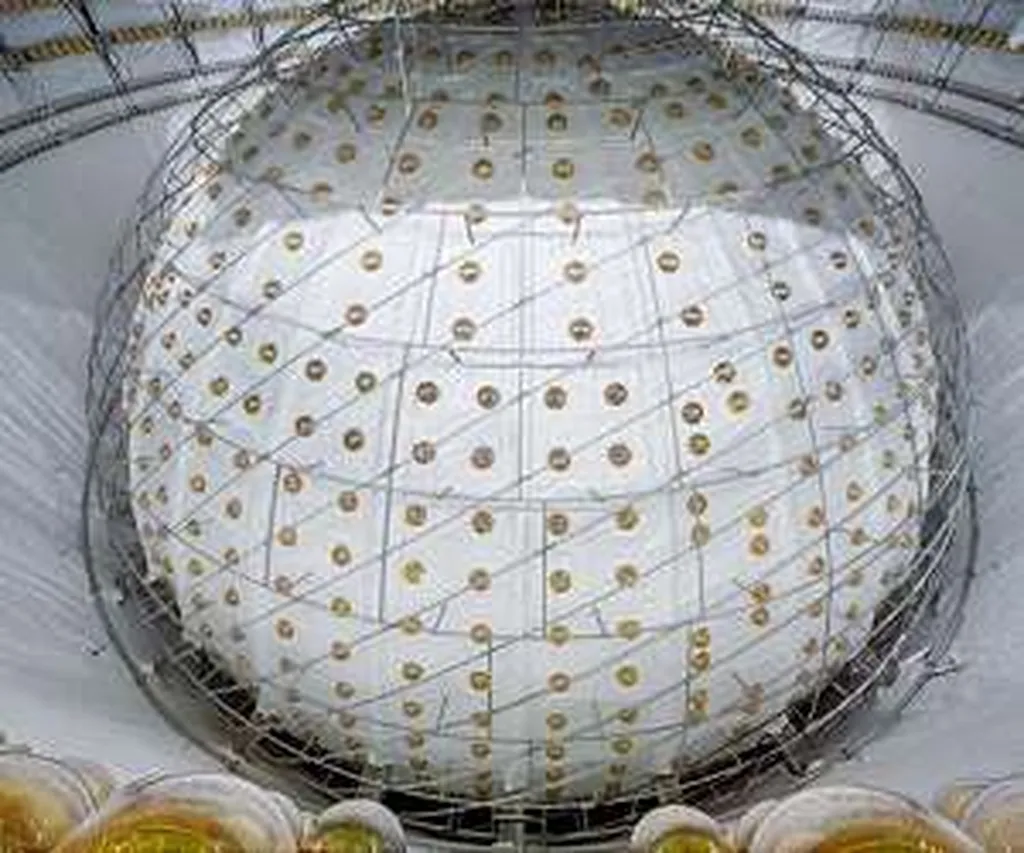In the realm of energy and particle physics, a team of researchers from the Jiangmen Underground Neutrino Observatory (JUNO) collaboration has recently presented the initial performance results of their detector. The JUNO collaboration is an international effort involving scientists from various institutions, including the Institute of High Energy Physics in China, and other prominent research bodies worldwide.
The JUNO detector, located in a shallow underground laboratory with significant overburden, began its physics data collection on August 26, 2025. It comprises a 20-kton liquid scintillator central detector, encircled by a 35-kton water pool acting as a Cherenkov veto, and nearly 1000 square meters of plastic scintillator veto on top. The detector’s design aims to achieve high precision in neutrino physics, which has implications for understanding fundamental particles and their interactions, potentially influencing future energy technologies that rely on nuclear processes.
During the commissioning phases and initial science runs, the JUNO detector demonstrated impressive performance metrics. The liquid scintillator achieved an attenuation length of 20.6 meters at 430 nanometers, indicating excellent transparency and quality of the scintillator material. The high coverage photomultiplier tube (PMT) system and scintillator together yielded about 1785 photoelectrons per MeV of energy deposit at the detector’s center. This high light yield is crucial for achieving precise energy measurements, which are essential for neutrino detection and energy calibration in particle physics experiments.
The reconstructed energy resolution of the detector is 3.4% for two 0.511 MeV gamma rays at the detector center and 2.9% for the 0.93 MeV quenched Po-214 alpha decays from natural radioactive sources. This high energy resolution is vital for distinguishing between different types of neutrino interactions and for accurately measuring the energy spectra of neutrinos. The energy nonlinearity is calibrated to better than 1%, ensuring that the detector’s energy measurements are highly accurate and reliable.
Intrinsic contaminations of U-238 and Th-232 in the liquid scintillator are below 10^-16 grams per gram, assuming secular equilibrium. This extremely low level of contamination is crucial for reducing background noise in the detector, which is essential for detecting rare neutrino interactions. The water Cherenkov detector achieves a muon detection efficiency better than 99.9% for muons traversing the liquid scintillator volume. This high efficiency is important for identifying and rejecting cosmic ray muons, which can mimic neutrino signals and contribute to background noise.
During the initial science runs, the data acquisition duty cycle exceeded 97.8%, demonstrating the excellent stability and readiness of JUNO for high-precision neutrino physics. The high duty cycle indicates that the detector is operating efficiently and reliably, with minimal downtime. This is crucial for collecting a large amount of data over extended periods, which is necessary for statistical analyses and discovering rare neutrino interactions.
The practical applications of the JUNO detector’s performance results extend to the energy sector, particularly in the field of nuclear energy. Neutrino physics plays a crucial role in understanding the fundamental processes involved in nuclear reactions, which are the basis for nuclear power generation. High-precision neutrino detectors like JUNO can provide valuable insights into the behavior of neutrinos in nuclear reactors, potentially leading to improvements in reactor design, safety, and efficiency. Additionally, the advanced detection technologies and data analysis techniques developed for neutrino physics can be applied to other areas of energy research, such as monitoring and controlling nuclear reactions in real-time.
In conclusion, the initial performance results of the JUNO detector demonstrate its capability for high-precision neutrino physics. The excellent energy resolution, low contamination levels, high muon detection efficiency, and stable operation make JUNO a powerful tool for studying neutrino properties and interactions. These advancements in neutrino detection technology have significant implications for the energy sector, particularly in nuclear energy research and development. The research was published in a peer-reviewed journal, ensuring the scientific community’s rigorous scrutiny and validation.
This article is based on research available at arXiv.

